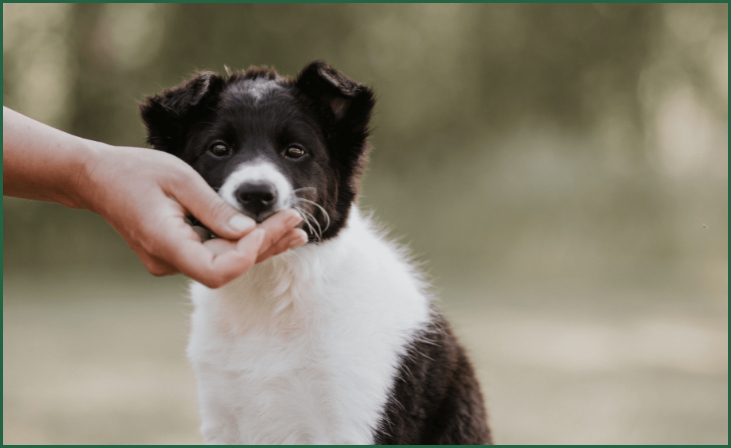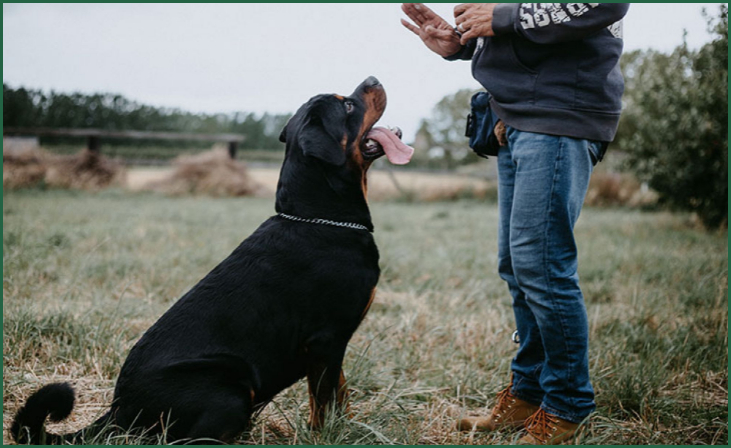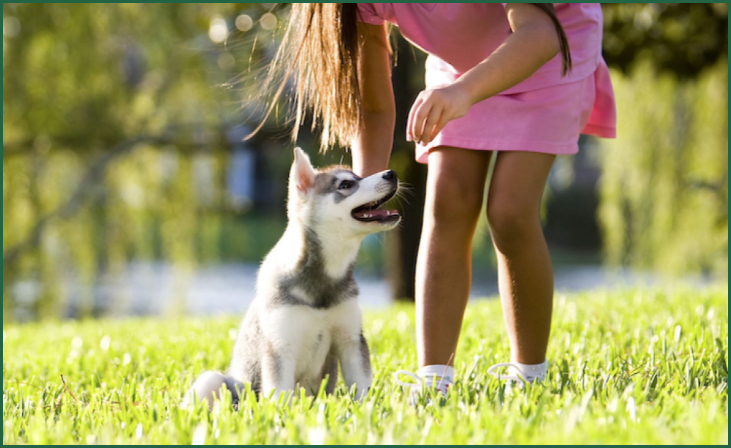Tips for Effective Puppy Training – In the journey of puppy training, fostering a positive and strong bond with your canine companion is paramount. Effective training not only shapes a well-behaved pet but also deepens the connection between you and your furry friend.
Understanding the developmental stages and unique needs of your puppy lays the foundation for a successful training experience. This guide explores essential tips, from basic commands to advanced techniques, emphasizing the significance of positive reinforcement and patience.
Beyond obedience, we delve into the vital aspects of socialization, health, and problem-solving, ensuring a well-rounded approach to your puppy’s well-being. With consistency, understanding, and dedication, you can embark on a fulfilling adventure of nurturing a disciplined, happy, and lifelong partnership with your four-legged family member.
Table of Contents
ToggleImportance of Puppy Training
Puppy training is a crucial investment in fostering a harmonious and fulfilling relationship between you and your canine companion. It goes beyond teaching basic commands; it lays the groundwork for a well-behaved and socially adept pet. Training provides mental stimulation, preventing boredom and destructive behaviors.
Additionally, it establishes clear communication channels, enhancing your ability to understand and meet your puppy’s needs. Socialization, a key component of training, ensures your puppy grows into a well-adjusted adult dog capable of navigating various environments and interacting positively with people and other animals.
Beyond the immediate benefits, a well-trained puppy is more likely to be welcomed in diverse settings, fostering a sense of inclusion and connection within the community. In essence, puppy training is an investment in building a strong, trusting bond and creating a foundation for a joyful and cooperative lifelong companionship.
Also, Read – How to Massage a Puppy
Tips for Effective Puppy Training
Start Early

Start training your puppy early for a solid foundation. Puppies are quick learners, and beginning training during their early months establishes good behavior habits. Focus on basic commands like sit, stay, and come, using consistent cues.
Early training sets the tone for a well-behaved adult dog and helps prevent unwanted behaviors. Keep sessions short, around 5-10 minutes, to match their attention spans. Positive reinforcement with treats, praise, or affection reinforces desired behavior.
Patience is crucial; avoid punishment and prioritize a nurturing environment. Early socialization is key, exposing your puppy to various environments and people. A consistent schedule for feeding and playtime aids in their understanding of routines.
Be Consistent
Consistency is the cornerstone of effective puppy training. Use the same commands and signals consistently to establish clear communication. This repetition helps your puppy understand expectations and accelerates the learning process.
Employ a uniform approach among family members to avoid confusion. Whether it’s mealtime, walks, or training sessions, maintain a consistent schedule. This reliability fosters a sense of security for your puppy, aiding in behavioral development.
Consistency extends to positive reinforcement; reward good behavior consistently with treats, praise, or affection. By being consistent in your actions and expectations, you create a structured environment that supports your puppy’s learning and encourages desired behaviors.
Positive Reinforcement
Harness the power of positive reinforcement in puppy training. Reward good behavior promptly with treats, praise, or affection to reinforce positive habits. This approach encourages your puppy to associate obedience with enjoyable outcomes, fostering a willing and eager learner. Be timely and consistent in your rewards, linking them directly to the desired behavior.
Redirect or ignore undesirable behavior rather than using punishment, creating a positive learning environment. Celebrate small victories, gradually phasing out treats as your puppy becomes more adept at following commands.
Positive reinforcement not only strengthens the bond between you and your puppy but also makes the training experience enjoyable and effective.
Also, Read – Pit Bull and Rottweiler Mix
Short Sessions
Opt for short, focused training sessions with your puppy. Their attention spans are limited, so aim for 5-10 minutes of engaging and positive training. Keep sessions dynamic and conclude them before your puppy loses interest.
Multiple short sessions throughout the day are more effective than one lengthy session. This approach prevents boredom and helps your puppy stay attentive and enthusiastic about learning.
Ending on a positive note leaves them eager for the next session, building a positive association with training. Adjust the length based on your puppy’s interest, ensuring each session is enjoyable and conducive to effective learning.
Use Simple Commands

Begin puppy training with straightforward commands like sit, stay, and come. Simple commands are easier for your puppy to grasp, laying the foundation for more advanced training. Consistently use clear and concise verbal cues along with corresponding hand signals.
Don't just scroll, subscribe!
BuzzTrail's unique web-stories are the cure for boredom you've been waiting for.
This clarity aids comprehension and speeds up the learning process. As your puppy becomes proficient in basic commands, gradually introduce more complex ones. Patience is key, allowing your puppy to master each command before moving on.
Simple commands create a solid communication base, strengthening the bond between you and your puppy while establishing a framework for more advanced training in the future.
Socialization is Key
Prioritize early and extensive socialization for your puppy. Exposure to various environments, people, and animals is crucial for well-rounded development. This process helps prevent behavioral issues and ensures your puppy grows into a confident and adaptable adult dog.
Plan controlled introductions to new experiences, gradually increasing complexity. Enroll in puppy socialization classes to facilitate positive interactions. Encourage positive associations by offering treats and praise during social encounters.
Regular and diverse socialization builds your puppy’s confidence, reduces fear, and promotes a friendly demeanor. This key aspect of training creates a well-socialized dog that is comfortable and well-behaved in a variety of situations.
Patience is a Virtue
Cultivate patience in puppy training; it’s a fundamental virtue. Puppies are learning the ropes, and mistakes are part of the process. Avoid frustration and maintain a calm demeanor, as negative reactions can hinder their progress.
Each puppy is unique, and learning curves vary. Celebrate small victories and understand that learning takes time. Reinforce positive behavior consistently, and avoid punitive measures that may instill fear.
Patience allows you to build trust and a positive relationship with your puppy, fostering an environment where they feel secure and eager to learn. With patience, you’ll navigate the ups and downs of training, ensuring a positive and successful experience for both you and your furry companion.
Regular Exercise
Prioritize regular exercise for your puppy’s physical and mental well-being. Puppies are full of energy, and routine exercise not only keeps them healthy but also aids in behavioral training. Daily walks, playtime, and interactive activities prevent boredom and destructive behavior.
Tailor exercises to your puppy’s age, breed, and health status, ensuring a balance between physical exertion and mental stimulation. A tired puppy is more receptive to training, making sessions more effective.
Establish a consistent exercise routine, incorporating activities that strengthen the bond between you and your puppy. Regular exercise contributes to a happy, well-adjusted dog and supports their overall development.
Use Appropriate Training Tools
Select suitable training tools for effective puppy training. Choose a collar and leash that fit properly, ensuring comfort and safety. For positive reinforcement, consider using a clicker or treats to reward desired behavior.
Training tools should be age and size-appropriate, promoting a positive experience for your puppy. Gentle leads and harnesses can be useful, especially for teaching loose-leash walking. Introduce tools gradually, allowing your puppy to become familiar and comfortable.
Seek guidance from a professional or your veterinarian to ensure the tools align with your puppy’s needs. Using appropriate training tools enhances the learning experience, facilitating effective communication and positive reinforcement in your training sessions.
Consistent Schedule

Establishing a consistent schedule is pivotal in puppy training. Maintain regular feeding times, creating predictability for your puppy. Scheduled potty breaks reduce accidents and aid in housebreaking.
Designate specific times for play, walks, and training sessions, promoting a structured routine. Consistency helps your puppy anticipate their needs, reducing anxiety. This routine facilitates effective communication, as your puppy learns when to expect various activities.
Regular schedules contribute to a sense of security, promoting good behavior and minimizing stress. Be flexible as needed, but strive for a reliable routine to create a stable environment for your puppy’s development and training success.
Conclusion
In conclusion, effective puppy training is not merely a series of commands; it is a commitment to nurturing a resilient, well-adjusted companion. Celebrate the milestones, savor the progress, and understand that training is a dynamic journey.
As you continue to invest time and effort, the rewards extend beyond obedience—they manifest in a deeper, lasting connection with your furry friend.
Embrace the joy of a well-trained companion and relish the lifelong adventure of shared experiences, mutual understanding, and the unbreakable bond forged through patient guidance and positive reinforcement.
FAQs
How long should training sessions be?
How long should training sessions be?
Keep sessions short, around 5-10 minutes for puppies, as their attention spans are limited. Frequent, positive interactions are more effective than prolonged sessions.
What’s the importance of socialization in puppy training?
What’s the importance of socialization in puppy training?
Socialization exposes puppies to various environments, people, and animals, promoting adaptability and preventing behavioral issues. Start socialization early and make it a continuous process.
How do I address common behavioral issues like biting and chewing?
How do I address common behavioral issues like biting and chewing?
Redirect undesirable behaviors with appropriate toys, use positive reinforcement, and be consistent. If problems persist, consult with a professional trainer or behaviorist.

